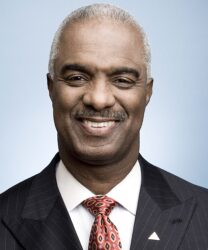Race & Economic Disparity
By the end of 2020, federal student loan debt in the United States surpassed $1.7 trillion, increasing by over 100% in the last decade. While this has become a national crisis impacting nearly 45 million borrowers, Black women are the most heavily burdened. A 2020 report by the AAUW indicates that Black women, on average, hold over $37,000 in loans each, compared to $31,346 held by white women, and $29,862 held by white men. As a whole, Black women, despite being the most institutionally educated demographic in the U.S., have a total of $35 billion in student loan debt. Furthermore, 57% of Black female college graduates indicate that they struggle to repay their student loans. While white borrowers are able to pay back an average of 10% of their total student loan debt each year, Black borrowers are only able to pay an average of 4% back, largely due to racial pay disparity.

 218 years of enslavement and 137 years of segregation have left Bermudians struggling with the legacies of intergenerational trauma and economic inequities across our society. A culture of silence and fear arose ensuring that past was suppressed and not talked about. People speak of the need to work together and the need for unity, however, the racial divide is widening, economic disparity between the races continues to grow, and social media is both educating and inflaming passions.
218 years of enslavement and 137 years of segregation have left Bermudians struggling with the legacies of intergenerational trauma and economic inequities across our society. A culture of silence and fear arose ensuring that past was suppressed and not talked about. People speak of the need to work together and the need for unity, however, the racial divide is widening, economic disparity between the races continues to grow, and social media is both educating and inflaming passions. Forest T. Harper Jr. is the President and CEO of INROADS, the nation’s largest non-profit model of salaried corporate DEI internships and corporate and community leadership development for outstanding ethnically diverse talent at the pipeline and mid-career level.
Forest T. Harper Jr. is the President and CEO of INROADS, the nation’s largest non-profit model of salaried corporate DEI internships and corporate and community leadership development for outstanding ethnically diverse talent at the pipeline and mid-career level. As he’s laid to rest, there are no shortage of salutes to Congressman John Lewis, the formidable civil rights activist and legislator from Georgia who departed this earth on July 17, 2020, at the age of 80.
As he’s laid to rest, there are no shortage of salutes to Congressman John Lewis, the formidable civil rights activist and legislator from Georgia who departed this earth on July 17, 2020, at the age of 80. Corporate Social Responsibility Goes Beyond Cosmetic Changes to Brands, Says Professor
Corporate Social Responsibility Goes Beyond Cosmetic Changes to Brands, Says Professor